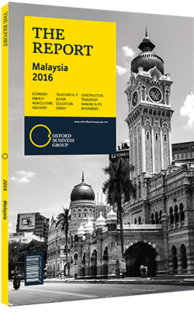Wong Heang Tuck, CEO, U Mobile: Interview

Interview: Wong Heang Tuck
To what degree is spectrum refarming important in ensuring that there is a level playing field in place for providers in Malaysia?
WONG HEANG TUCK: It is very important because U Mobile currently has high-frequency bands of 2100 MHz and 2600 MHz, which are great for capacity. But for us to cover the country and provide an even better customer experience to the public, we need coverage for bands at the lower end of the spectrum. U Mobile is fully supportive of Malaysian Communications and Multimedia Commission’s intention to create a vibrant and more competitive market by allocating the 900 MHz and 1800 MHz bands to all four operators in Malaysia.
U Mobile will be able to utilise the 1800 MHz and 900 MHz starting January 1, 2017 and July 1, 2017, respectively. These allocations will enable U Mobile to further enhance our network quality and services as well as to support the Eleventh Malaysia Plan 2016-20 target, enabling 95% of Malaysians to have access to mobile internet.
Which technological developments are driving innovation within the industry?
TUCK: As online transactions increase and we move towards the internet of things, the customer’s phone will increasingly double as an e-wallet, becoming integral for transactions and functioning for all intents and purposes in the same way as a credit card. Telecoms operators are preparing for this but regulators on both the telecoms side and the Bank Negara Malaysia side need to sit down and iron out the exact parameters.
Taken to its logical conclusion, we can essentially take on the role of a bank. Putting money onto your phone will be just the same as putting money in the bank. However, the framework needs to be in place in order for this to be possible and to ensure that it fully complies with the banking regulations.
How are consumer expectations redefining competition between telecoms companies?
TUCK: It is not new or unique to Malaysia but there is a shift happening worldwide from voice and SMS to data, and the question becomes, how can we price and monetise the latter? Data is unlike voice and SMS, where people tend to tolerate some lag or delay or disruption in their service. Customers expect to be connected at all times. How do we compete or partner with over-the-top content providers, which have the lion’s share of the voice and SMS market?
We are rolling out packages that are more targeted to the younger segment of the market, and we are trying to bundle in more data while cutting back on peripheral services. If you look at Maxis, Celcom, and Digi, they are focused on an older demographic. So while some may perceive current competitive practices as a price war, industry players do not. Older customers are unwilling to change providers just because another network offers a lower price. If they are used to their network and aren’t using that much data, even if they have a bad experience they don’t switch. The only time they change providers is when their children and grandchildren push them to. So we are aiming to attract the young ones to influence the older generation.
What strategies are telecoms providers employing to increase average revenue per user?
TUCK: Our strategy is data-centric, so we are introducing a lot of value-added services, such as video streaming and free YouTube streaming for the early hours of the morning. Surprisingly, we have found that customers stay up for this, and it has become our peak traffic period. Nowadays, many youngsters don’t sleep until 3am-4am in the morning.
There will be no single killer app for data in the future, but rather multiple apps, and we’ll need to continue changing regularly. This is the data world.
You have reached the limit of premium articles you can view for free.
Choose from the options below to purchase print or digital editions of our Reports. You can also purchase a website subscription giving you unlimited access to all of our Reports online for 12 months.
If you have already purchased this Report or have a website subscription, please login to continue.

